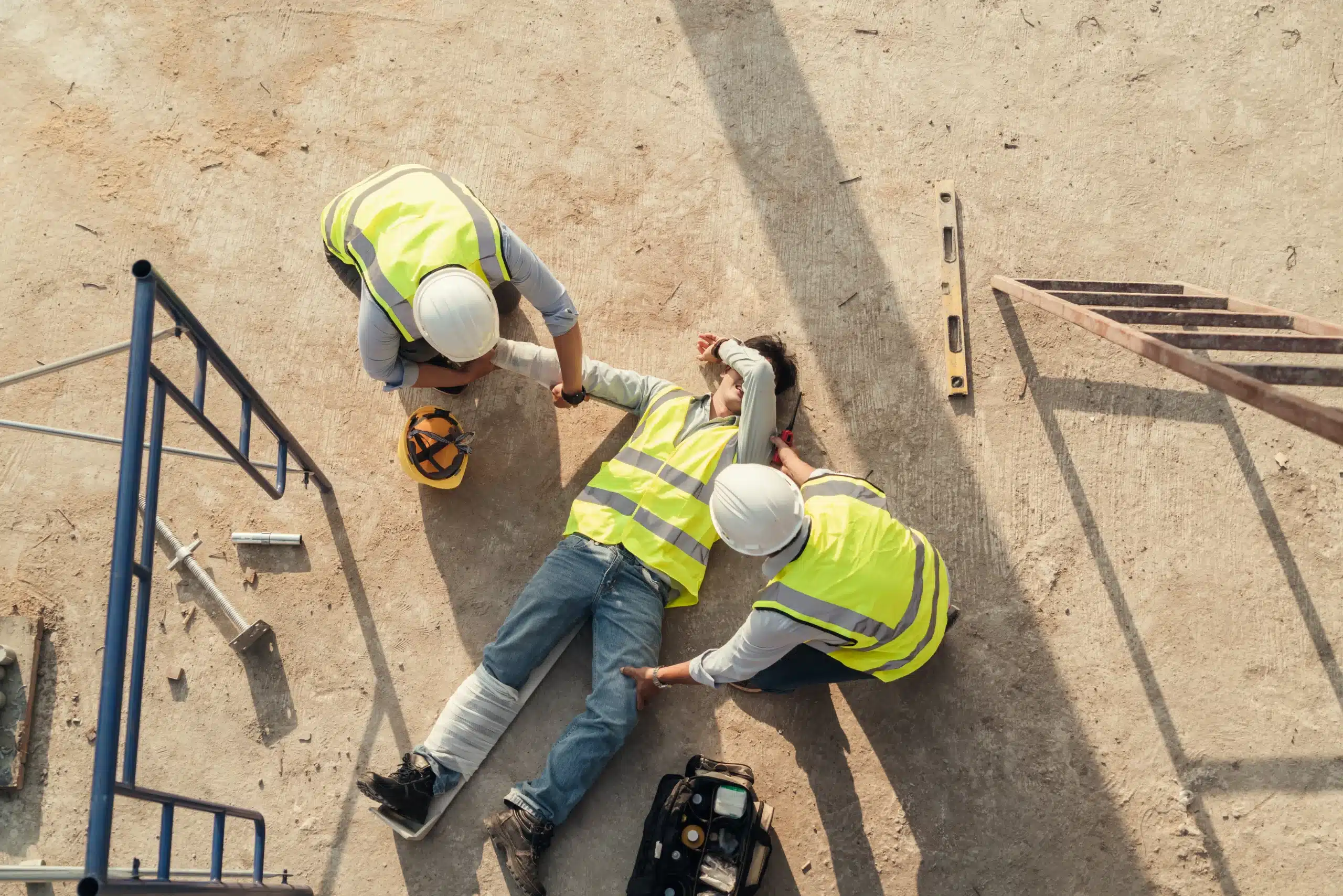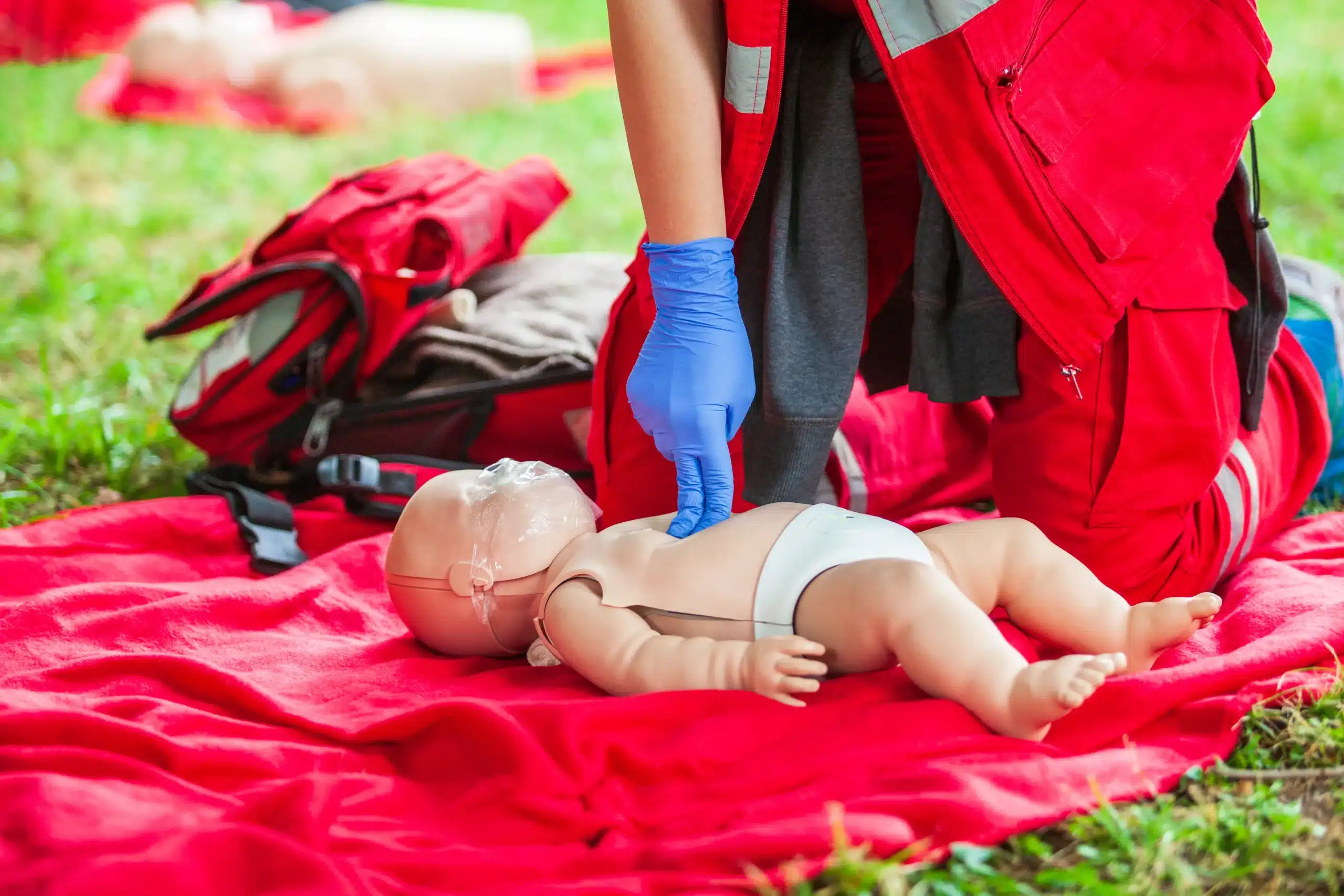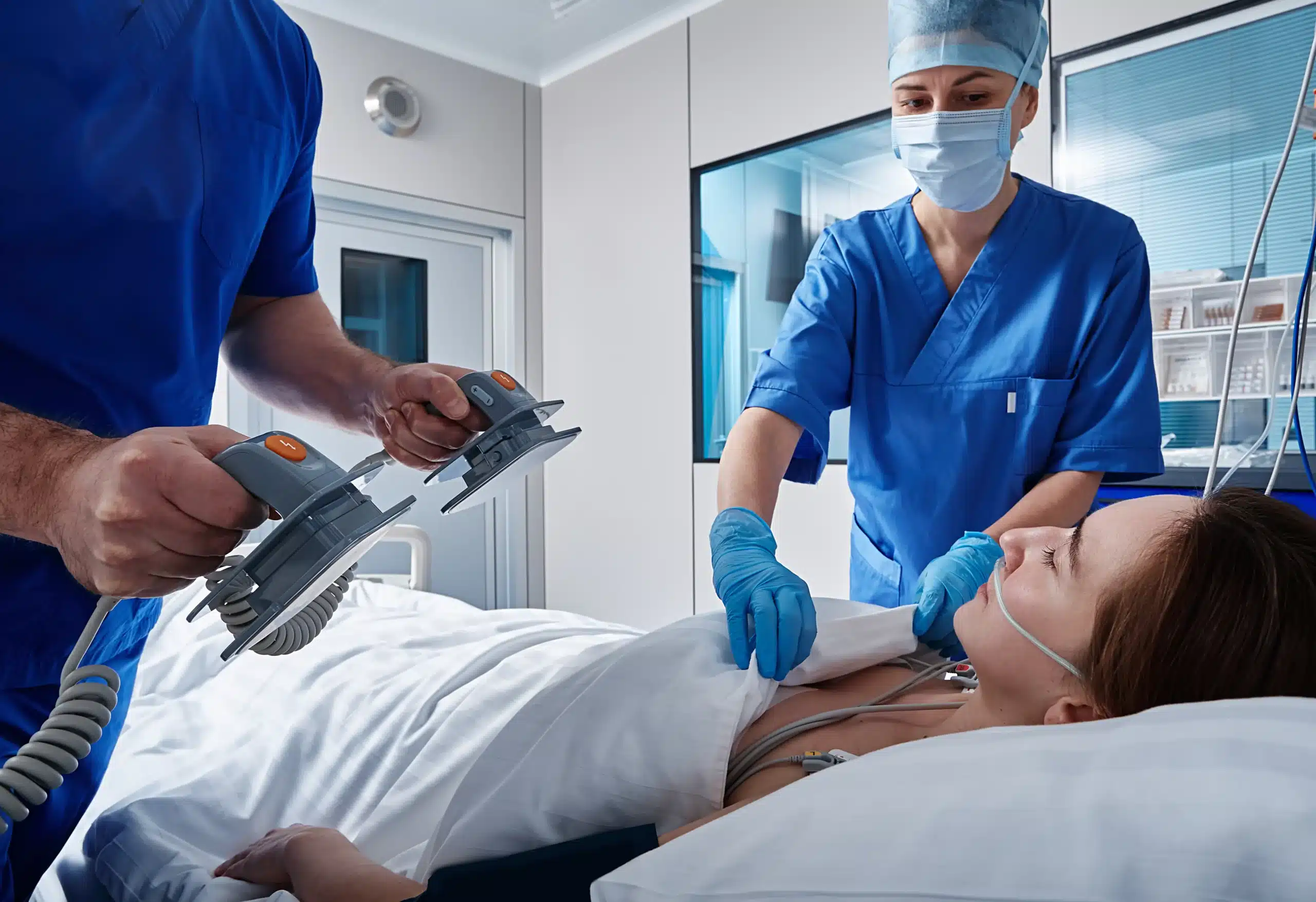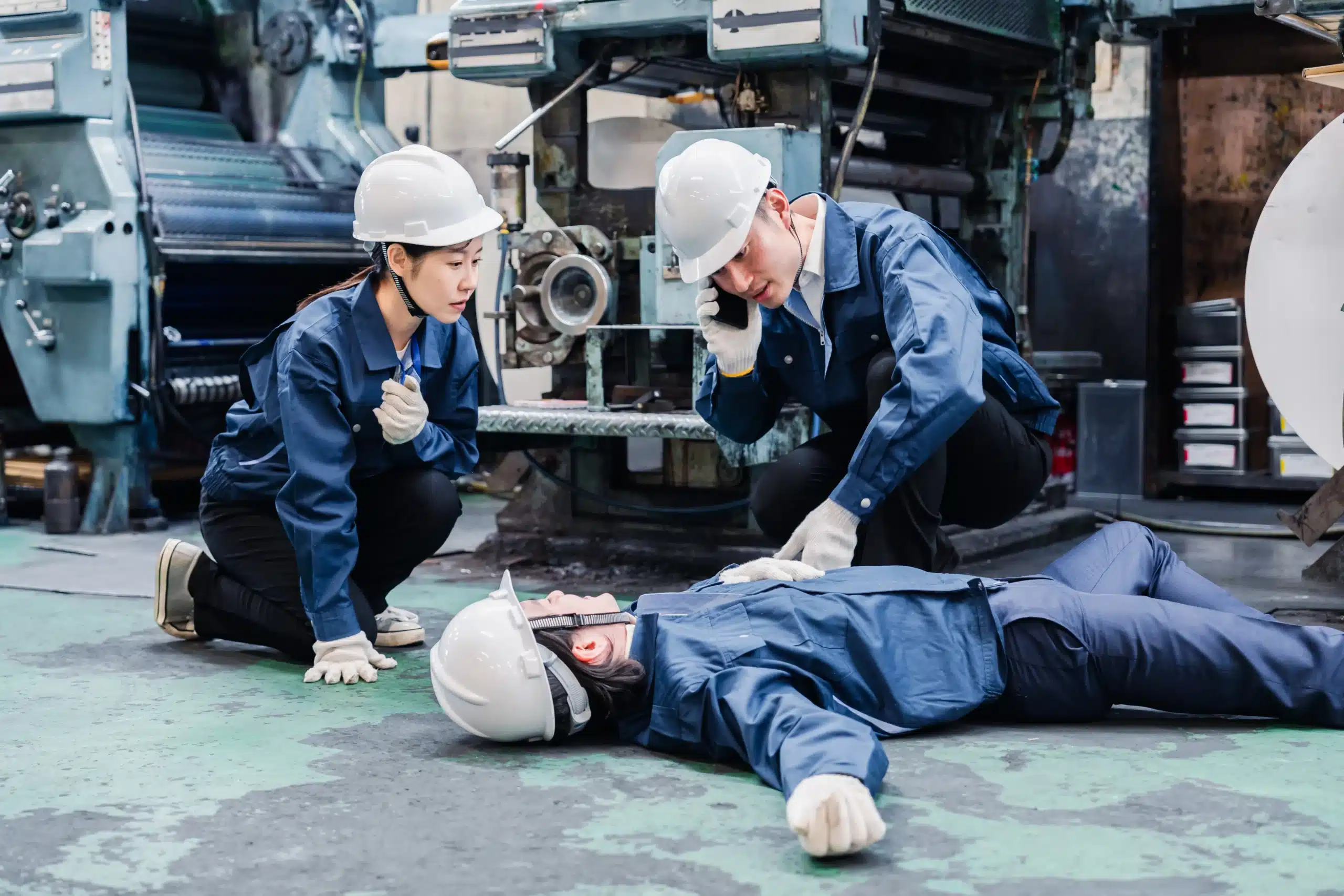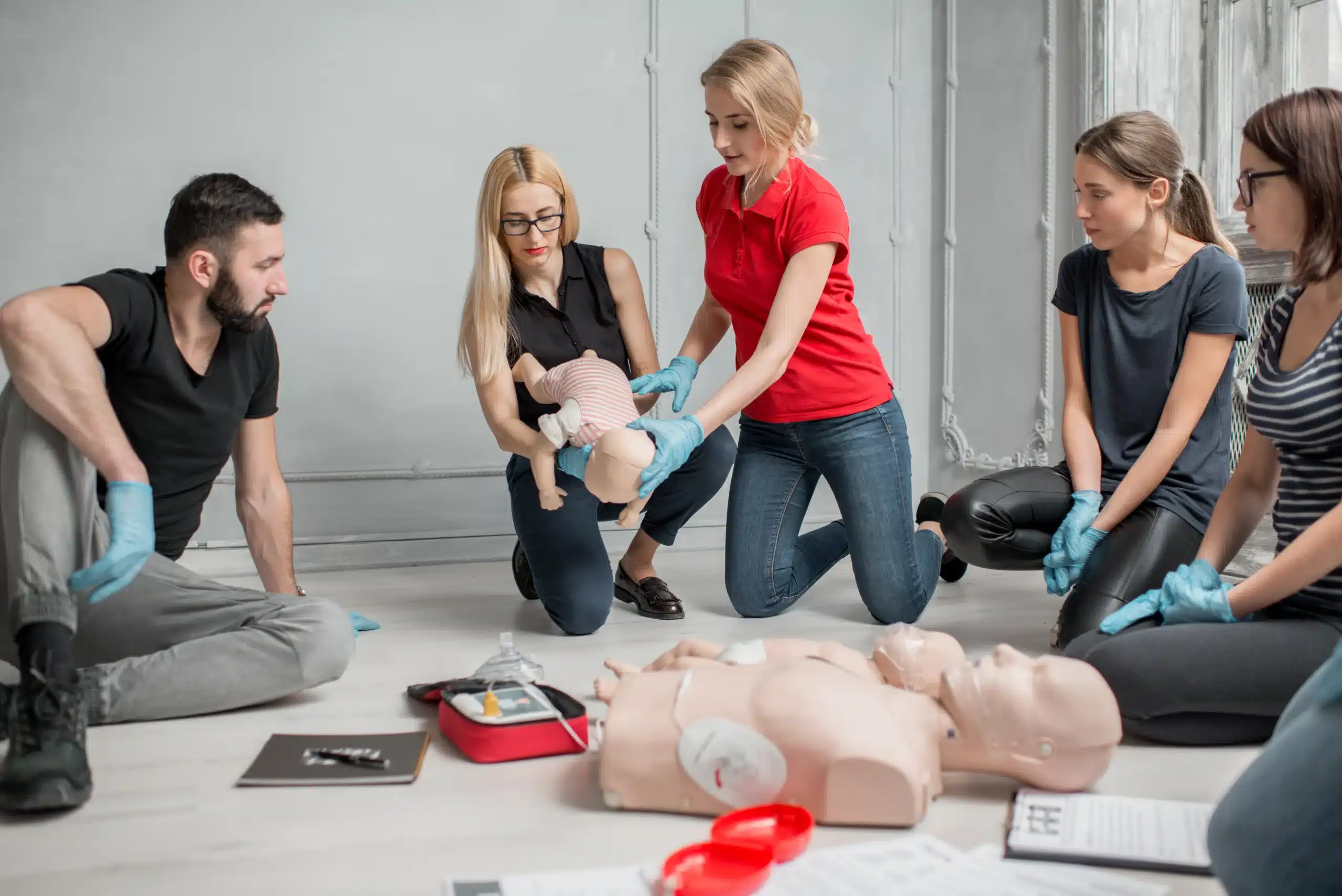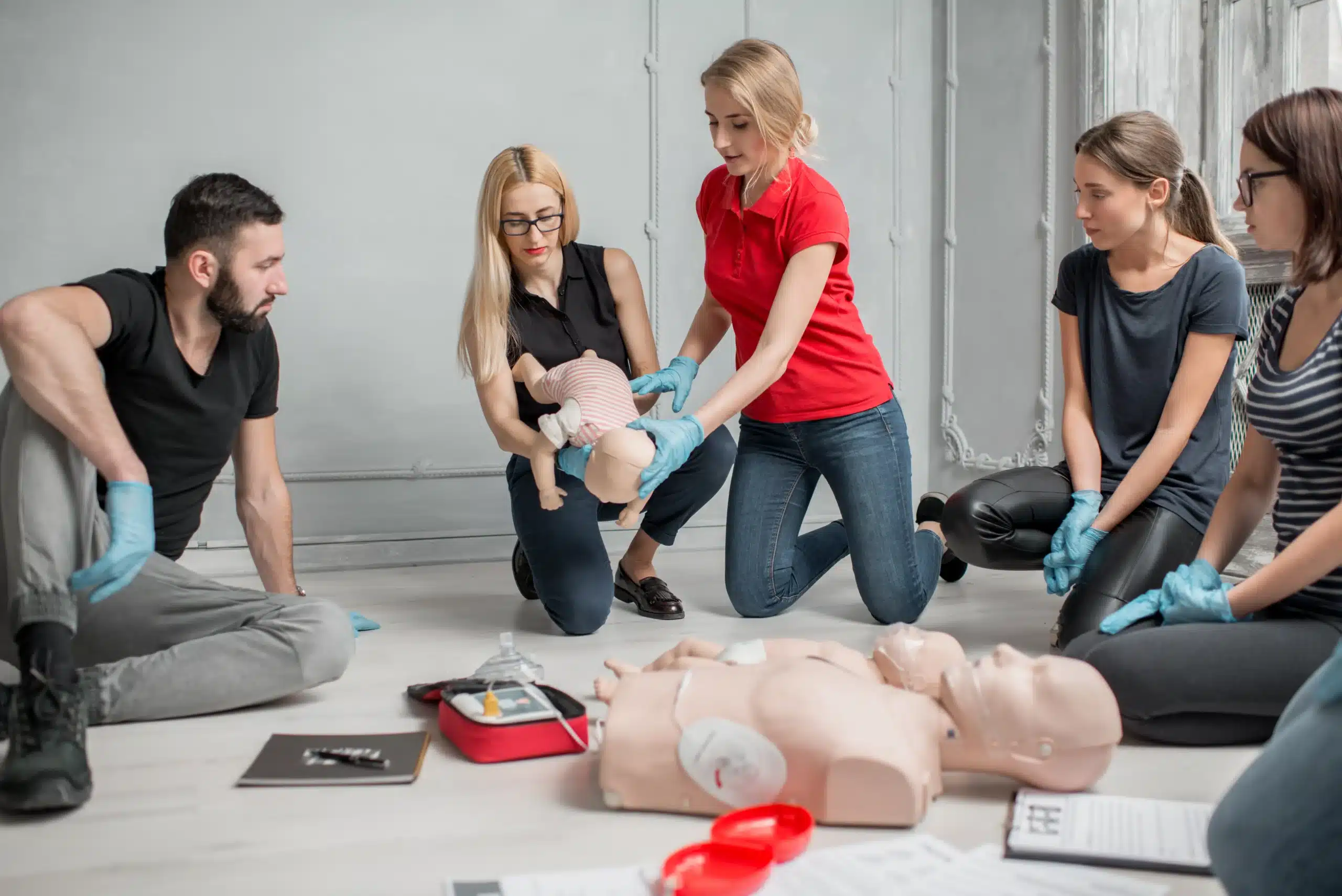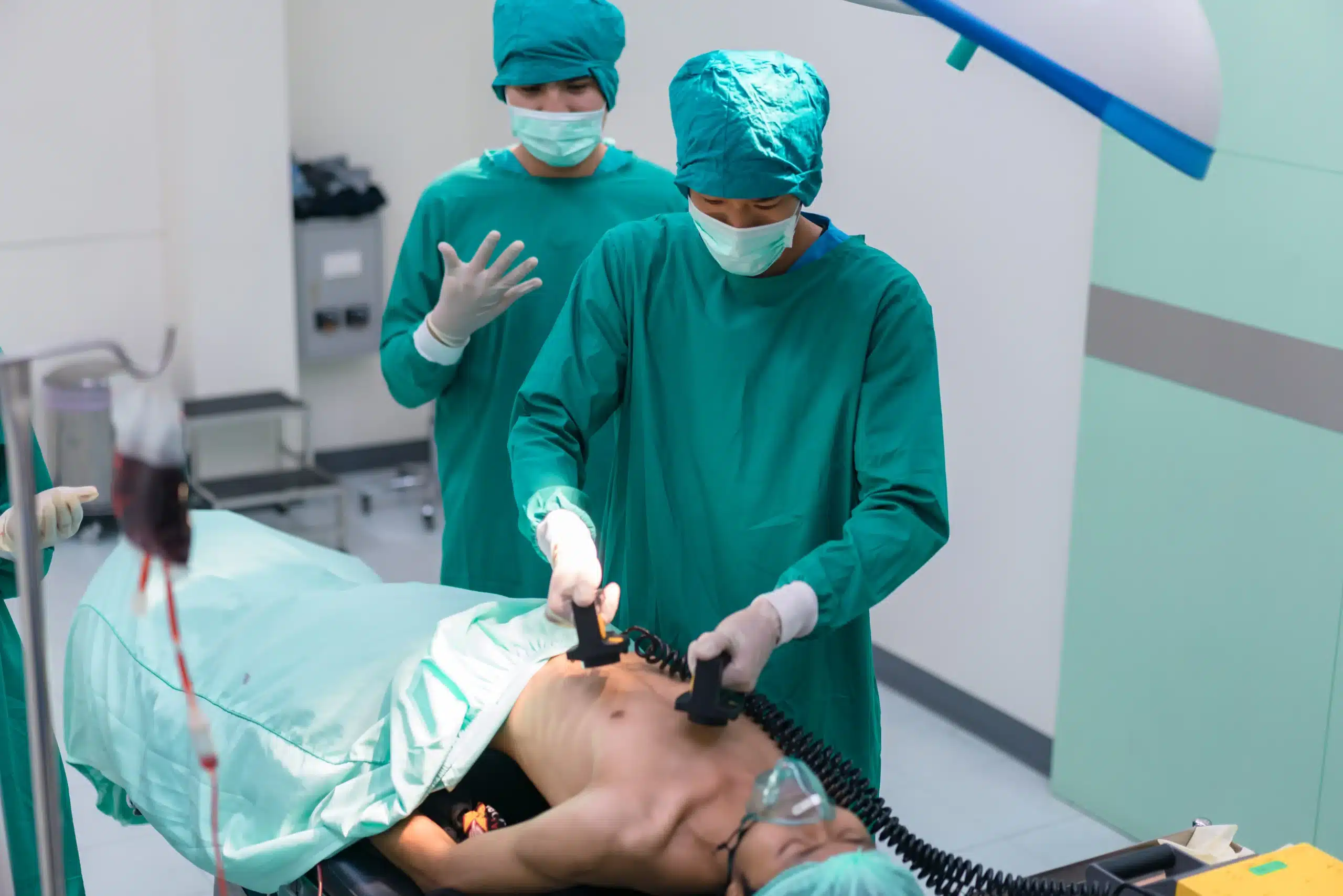BLS certification is more than just a piece of paper—it’s a testament to your ability to provide critical care in emergencies. This guide is designed to answer all your BLS questions, from understanding the core skills to finding the right training program. Whether you’re a healthcare provider seeking recertification or someone exploring a new career path, we’ll help you find “BLS certification near me” and guide you through the process. Let’s explore the world of BLS together.
Key Takeaways
- BLS certification empowers you to act: Whether required for your job or for personal preparedness, BLS training gives you the skills to confidently handle medical emergencies like cardiac arrest. Explore different course formats to find what suits your needs.
- Select a BLS provider carefully: Look for respected organizations like the AHA or Red Cross. Consider cost, location, and reviews when choosing a provider. Don’t hesitate to ask questions about instructor qualifications and the recertification process.
- BLS training opens doors: This certification can enhance your career prospects in healthcare and other fields, boost your confidence in emergencies, and demonstrate your commitment to patient care. Stay up-to-date with the latest guidelines to maximize the benefits of your training.
What is BLS Certification & Why Does it Matter?
Basic Life Support (BLS) certification equips you with the skills to respond to medical emergencies, especially cardiac arrest and other life-threatening situations. BLS training emphasizes managing airways and providing fundamental life support—essential for anyone, but particularly crucial for healthcare professionals and first responders. It’s about knowing what to do when every second counts.
Key BLS Skills
BLS courses cover several vital skills, including CPR (Cardiopulmonary Resuscitation), using an AED (Automated External Defibrillator), and high-pressure problem-solving. The training often uses real-world scenarios to sharpen your critical thinking and teamwork abilities, preparing you to handle real emergencies with confidence. You’ll learn how to assess a situation, make quick decisions, and work effectively with others—all essential for positive outcomes.
BLS Importance for Healthcare Professionals & First Responders
For many professions, BLS certification isn’t just recommended—it’s required. This includes roles like firefighters, police officers, EMTs, paramedics, and nurses. BLS certification is a must-have.
Find BLS Certification Courses Near You
Finding the right BLS certification course shouldn’t feel like searching for a needle in a haystack. With a little know-how, you can quickly locate convenient, high-quality training options. Here’s how:
Online Search Strategies
Start your search online. Use specific keywords like “BLS certification near me” or “American Heart Association BLS courses” plus your city and state. Many training centers have websites with online schedules and registration, making it easy to compare options and find a class that fits your schedule. You can also check websites like the American Heart Association or the Red Cross to search for certified instructors and training centers in your area.
Local Organizations Offering BLS Training
Hospitals, community colleges, and dedicated training centers often offer BLS certification courses. Check with local hospitals, fire departments, or community centers for upcoming classes. Look for training centers specializing in healthcare certifications. For example, in Milpitas, Safety Training Seminars offers BLS training along with other courses like ACLS, PALS, CPR, and First Aid. They offer flexible class schedules, making CPR certification accessible to residents and those working nearby.
Milpitas CPR Classes & Other Providers
Milpitas CPR Classes offers a variety of American Heart Association (AHA) BLS certification courses. As an AHA Training Center, they provide high-quality instruction and official certification cards upon completion. They serve Milpitas, San Jose, and Santa Clara, making them a convenient option for residents of those areas. If you’re looking for additional options, consider searching for nearby providers offering similar AHA-certified courses. Remember to check reviews and compare course content, schedules, and pricing before making a decision.
Explore BLS Course Formats
When it comes to BLS certification, you have options. Let’s break down the most common course formats: in-person, online, and blended learning, so you can find what works for your schedule and learning style.
In-Person Training Advantages
In-person BLS training offers a hands-on learning experience. You work directly with an instructor, practice skills on mannequins, and ask questions in real-time. This format excels at building muscle memory and confidence through repetitive practice and immediate feedback. Milpitas CPR Classes offers this type of training, covering essential procedures for managing airways and providing basic life support. The dynamic of a classroom setting also allows for interaction with other students, fostering a sense of community and shared learning. This can be especially helpful for those who thrive in collaborative environments.
Online Course Flexibility
Online BLS courses provide ultimate flexibility. You learn at your own pace, fitting the training around your busy schedule. This format is ideal for those juggling work, family, or other commitments. As one article explains, online courses have become a reliable solution, allowing healthcare professionals to complete training from anywhere with internet access. While online courses often involve self-directed learning, many include interactive elements like videos and quizzes to keep you engaged.
Blended Learning Options
Blended learning combines the best of both worlds. You complete some coursework online at your own speed, then attend an in-person skills session to practice what you’ve learned. This approach offers a good balance of flexibility and hands-on training. The American Heart Association’s RQI program is a popular example of blended learning for healthcare professionals looking to maintain their certifications. The Red Cross also offers blended learning courses that combine online coursework with in-person skills sessions, led by expert instructors. This format can be particularly effective for reinforcing knowledge and ensuring competency in essential BLS skills.
Top BLS Certification Providers
Finding the right BLS certification provider is crucial for receiving high-quality training. Several reputable organizations offer BLS certification courses, each with its own strengths. Here’s a closer look at some of the top providers:
American Heart Association
The American Heart Association (AHA) is a leading authority on cardiovascular health and CPR training. Their BLS course is designed for healthcare professionals and other personnel who need to perform CPR and other basic cardiovascular life support skills. The AHA’s comprehensive curriculum and focus on evidence-based practices make their certification highly respected in the medical field.
American Red Cross
The American Red Cross is another well-known and trusted provider of BLS training. They offer several ways to get certified: online, blended (online + in-person), and in-person, providing flexibility for different learning styles and schedules.
National CPR Foundation
The National CPR Foundation offers a variety of courses, including BLS, ACLS, and PALS. They focus on providing high-quality training that meets the latest guidelines. They are known for their commitment to accessible and affordable training options, making BLS certification more attainable for a wider range of individuals.
ProTrainings
ProTrainings provides a comprehensive online BLS certification course designed to meet the needs of healthcare professionals, with a focus on convenience and accessibility. Their online format allows students to learn at their own pace and complete the certification process from anywhere with an internet connection.
Health & Safety Institute (HSI)
HSI offers a range of BLS courses compliant with the latest AHA guidelines, ensuring participants receive up-to-date training. They provide various training formats, including online and in-person options, catering to diverse learning preferences.
Milpitas CPR Classes
Milpitas CPR Classes offers a variety of American Heart Association (AHA) BLS certification courses, with classes available seven days a week. Serving Milpitas, San Jose, and Santa Clara, they provide local, accessible training for those seeking AHA-compliant BLS certification. Their focus on flexible scheduling makes them a practical choice for busy professionals and community members.
BLS Certification: Cost & Value
Getting BLS certified is an investment in your skills and future. Let’s break down the costs, potential discounts, and the long-term value a BLS certification offers.
Average Price Range & Cost Factors
BLS certification courses typically range from $70 to $100, depending on the provider, location, and course format. Factors influencing the cost include the training materials, instructor fees, and the type of certification offered (e.g., American Heart Association, American Red Cross). Milpitas CPR Classes offers various AHA BLS certification courses, providing options to fit different budgets and schedules. The value you receive often outweighs the initial cost, especially considering the potential to save lives. For those specifically seeking BLS training in Milpitas, you can find more information on their Basic Life Support Milpitas page. They are a woman-owned AHA Training Center focused on providing high-quality courses.
Potential Discounts & Promotions
It’s always wise to check for discounts or promotions before registering for a BLS course. Some providers offer discounts for groups, students, or returning customers. You might also find seasonal promotions or discounts for early registration. Contact your chosen provider directly for their current offers. For example, you can inquire with Milpitas CPR Classes about any available discounts.
Long-Term Career Value
A BLS certification is a valuable asset for many career paths. It’s often a prerequisite for jobs in healthcare, public safety (like firefighters and police officers), and other fields requiring emergency response skills. Having a BLS certification demonstrates your commitment to safety and preparedness, which can give you an edge in the job market. Knowing you have the skills to potentially save a life brings a sense of confidence and empowerment that extends beyond the workplace. The Red Cross highlights how BLS certification requirements can vary by location, so research the specific needs of your desired profession and region. Ultimately, the long-term career value and personal satisfaction gained from BLS certification make it a worthwhile investment.
What to Expect During BLS Certification
Getting BLS certified is a straightforward process. Here’s what you can expect, from the curriculum to the hands-on practice and assessment:
Course Curriculum Overview
BLS certification courses, whether through the American Red Cross or another provider, adhere to the American Heart Association (AHA) guidelines. Expect the curriculum to cover adult, child, and infant CPR, AED use, and clearing obstructed airways. Courses often use a scenario-based approach to develop your critical thinking skills for real-life emergencies.
Hands-on Practice
BLS courses involve substantial hands-on practice. You’ll perform CPR on mannequins, learn to use training AEDs, and practice clearing obstructed airways. This hands-on training builds the muscle memory and confidence you’ll need in an emergency. Some courses, like those from the Red Cross, offer blended learning, combining online learning with in-person skills sessions.
Assessment & Certification Process
Your BLS course will conclude with an assessment of your knowledge and skills, usually involving a written exam and a practical skills test. After successfully completing both, you’ll receive your AHA BLS certification card, typically valid for two years. Remember to keep your certification current to maintain your skills and comply with workplace requirements.
BLS Certification: Duration & Renewal
Once you’ve decided to get BLS certified, you’ll want to know what to expect time-wise. This section covers how long a BLS course takes, how long your certification is valid, and how to stay current with the latest guidelines.
Typical Course Length & Certification Validity
A BLS certification course from the American Heart Association (AHA) typically takes a few hours to complete, depending on the format and provider. Upon successful completion of an AHA BLS course, you’ll receive an American Heart Association certification card, valid for two years. This timeframe gives you ample time to use your skills, but also ensures you stay up-to-date with evolving best practices.
Renewal Process & Requirements
After your initial two-year certification expires, you’ll need to take a BLS renewal course. This refresher covers any updates to the BLS guidelines since your last certification. Renewal courses are generally shorter than initial certification courses, as they focus on reinforcing existing skills and introducing new updates. Understand the specific renewal requirements for your certifying organization, as they may vary. Some organizations may require hands-on skills testing, while others may offer online renewal options. Avoiding common pitfalls during BLS recertification is key to staying prepared for emergencies.
Staying Up-to-Date with Guidelines
Staying current with the latest BLS guidelines is crucial for providing effective care. These guidelines are periodically updated to reflect advances in resuscitation science and best practices. For instance, the 2020 BLS guidelines included important updates regarding ventilation techniques during resuscitation. By staying informed about these updates through recertification courses and continuing education, you can ensure you’re always equipped to handle emergency situations. BLS certification is often required for various jobs, including firefighters, police officers, EMTs, paramedics, and nurses. Specific requirements for BLS certification vary by location, so check with your employer or local regulatory bodies.
Prepare for BLS Certification Success
Getting ready for your BLS certification involves more than just showing up. A little prep work goes a long way in making sure you get the most out of your training. Here’s how to set yourself up for success:
Pre-Course Study Materials
Reviewing BLS study materials beforehand can significantly improve your understanding and performance during the course. Think of it as a warm-up for your brain! Familiarizing yourself with the latest guidelines and practices ahead of time will help you absorb the information more effectively. This preparation can be especially helpful for recertification, as guidelines can change. You can find helpful resources and study materials on the Milpitas CPR Classes blog, which emphasizes the benefits of BLS certification. For those recertifying, this article on common pitfalls offers valuable insights into what to review before your course.
What to Bring to Class
Knowing what to expect and having the necessary materials can make your BLS class experience much smoother. Your chosen provider, like those offering CPR training in Milpitas, will provide specifics, but a notebook and pen are always helpful for jotting down notes. Comfortable clothing is also essential, as you’ll be actively participating in hands-on training.
Mental Preparation Tips
Mental preparedness is just as important as having your physical materials. A positive mindset can significantly impact your learning. Understanding the potential challenges of BLS certification and recertification can help you approach the course with confidence. This article discussing challenges in BLS recertification offers helpful perspectives. Remember, BLS training provides you with life-saving skills, and a positive attitude, as this research on the effectiveness of BLS training shows, can make the learning process more effective. You’ve got this!
Choose the Right BLS Provider
Finding the right BLS provider is crucial for a positive and effective learning experience. It’s an investment in your skills and can even impact your career, so take the time to research and choose wisely. Here’s what to consider:
Factors to Consider
First, think about what you need from a BLS course. Do you prefer in-person, hands-on learning, or does the flexibility of an online course better suit your schedule? Milpitas CPR Classes offers various formats, including online, in-person, and blended learning, so you can find a good fit. Consider your learning style and how you best absorb information. Also, check if the provider offers American Heart Association (AHA) certified courses, as these are widely recognized and respected. AHA certification ensures the course content aligns with the latest evidence-based guidelines for CPR and emergency cardiovascular care. Finally, location and scheduling are practical factors. Choose a provider with convenient class times and a location that works for you.
Reading & Interpreting Reviews
Before committing to a BLS provider, check out reviews and testimonials from past students. These offer valuable insights into the quality of instruction, course materials, and overall learning experience. Look for comments about the instructor’s expertise, the clarity of explanations, and the helpfulness of the hands-on practice. Testimonials can give you a sense of whether the course met student expectations and adequately prepared them for real-life scenarios. Don’t hesitate to ask the provider directly for references or additional testimonials if you need more information.
Questions to Ask Before Enrolling
Once you’ve narrowed down your options, asking a few key questions can help you make the final decision. Inquire about the total cost of the course, including any additional fees for materials. Also, ask about the recertification process and requirements, as staying current with your certification is essential. Understanding these details upfront will prevent surprises later. It’s also wise to ask about the instructor’s qualifications and experience. Are they certified healthcare professionals with real-world experience? Finally, clarify any specific requirements for the course format you choose. By asking these questions and doing your research, you can confidently choose a BLS provider that meets your needs and sets you up for success.
Maximize Your BLS Certification
Getting your BLS certification is a smart move, but it’s not the final destination. Think of it as a stepping stone—one that can lead to some exciting opportunities. Here’s how to truly maximize your BLS certification:
Career Advancement Opportunities
BLS certification opens doors to a wider range of jobs. Many roles in healthcare, public safety, and education require this certification as a baseline. Think firefighters, police officers, EMTs, paramedics, and nurses. Even if it’s not a strict requirement, having BLS on your resume shows employers you’re prepared and proactive. It can give you a competitive edge, possibly leading to higher-paying roles. Specific requirements for BLS certification vary by location, so check with licensing boards or potential employers in your area.
Increased Confidence in Emergencies
It’s one thing to know what to do in a medical emergency; it’s another to feel confident putting that knowledge into action. BLS training equips you with the skills and the muscle memory to respond effectively under pressure. This translates to increased confidence, not just in the workplace, but also in your daily life. Knowing you can handle a crisis empowers you to act quickly and decisively when every second counts.
Meeting Workplace Requirements
For many healthcare professionals, BLS certification isn’t just a bonus—it’s essential. The American Heart Association sets the standard for many healthcare practices, and BLS certification demonstrates your commitment to those standards. Staying current with your recertification ensures you’re up-to-date on the latest guidelines and best practices. This protects your patients and safeguards your career. Meeting these requirements shows your employer and your patients that you take your responsibilities seriously.
Related Articles
- BLS Certification in San Jose: Your Complete Guide – Milpitas CPR Classes
- BLS Certification Milpitas: Your Comprehensive Guide – Milpitas CPR Classes
- Find BLS Classes Near Me: A Practical Guide – Milpitas CPR Classes
- BLS Recertification Near Me: A Complete Guide – Milpitas CPR Classes
- Online BLS Classes in Milpitas: Your Complete Guide – Milpitas CPR Classes
Frequently Asked Questions
Is BLS certification the same as CPR certification? BLS certification includes CPR training but covers a broader range of life-saving skills, such as using an AED and relieving airway obstructions. It provides a more comprehensive approach to emergency care than CPR alone. Think of CPR as one vital tool within the larger BLS toolkit.
How long does it take to get BLS certified? BLS courses typically take a few hours to complete, though the exact duration can vary depending on the provider and the course format (in-person, blended, or online). Check with your chosen training center for their specific course length.
How much does BLS certification cost? The cost of BLS certification varies depending on the training center, location, and course format. Expect to pay somewhere between $70 and $100. Look for potential discounts offered by some providers for groups, students, or early registration.
How often do I need to renew my BLS certification? BLS certification is typically valid for two years. To maintain your credentials and stay up-to-date with the latest guidelines, you’ll need to complete a recertification course before your current certification expires.
Where can I find BLS courses near me? You can easily find BLS courses near you by searching online using keywords like “BLS certification near me” or “American Heart Association BLS courses,” along with your city and state. Local hospitals, community colleges, and dedicated training centers like Milpitas CPR Classes also offer BLS courses. The American Heart Association and the Red Cross websites can also help you locate certified training centers in your area.
